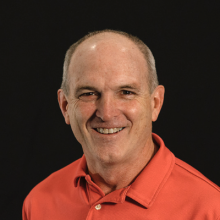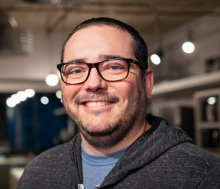You are viewing content from a past/completed conference.
Survival Strategies for the Noisy Neighbor Apocalypse
Abstract
Noisy neighbor issues are a common challenge for multi-tenant platforms, leading to resource contention, performance degradation, and costly downtime for other tenants sharing the same resources. Observability is the first step towards ensuring platform reliability by detecting noisy neighbors before they cause irreparable damage. In this presentation, I will share our experience and lessons learned with a case study from the Asset Management Platform at Netflix about how we detected and survived a noisy neighbor.
Topics covered in this presentation include:
- Effective observability to detect and address issues before they impact applications.
- Strategies for scaling the platform horizontally and vertically to accommodate growth and changing workloads.
- Fair resource allocation practices to ensure equitable access to resources for all tenants and prevent contention.
While we can't wholly avoid noisy neighbor issues, observability is the key to reducing the
impact and ensuring platform stability and reliability.
Speaker

Meenakshi Jindal
Staff Software Engineer @Netflix
Meenakshi Jindal is a seasoned Staff Software Engineer with over 15 years of experience in software design and implementation across multiple industries, including banking, insurance, travel, and media. She specializes in designing high-performance, scalable, and reliable distributed systems that facilitate seamless integrations within the Netflix studio and content ecosystem. Passionate about resolving complex challenges about cloud-distributed systems and NO-SQL databases like Cassandra and Elasticsearch. She holds a Master's in Computer Application and an MS in Information Systems and Management. She is a certified Associate AWS Solution Architect.
Find
Meenakshi Jindal
at:
From the same track
Session
Architecture
Reliable Architectures Through Observability
Wednesday Jun 14 / 02:55PM EDT
We want our systems to be reliable, but testing alone isn't enough. In a complex, multi-service system, it's impossible to test your way to correctness. That's why we need observability. Observability is the ability to see what our code is doing, in production and in development.

Kent Quirk
Staff Engineer @Honeycomb.io
Reliable Architectures Through Observability
Session
Kafka
How to Build a Reliable Kafka Data Processing Pipeline, Focusing on Contention, Uptime and Latency
Wednesday Jun 14 / 10:35AM EDT
Shifting workloads from synchronous to asynchronous can simplify the operational cost of high-throughput HTTP services. But understanding the evolution of performance metrics in the world of complex, high-concurrency, asynchronous distributed systems can be quite challenging.

Lily Mara
Engineering Manager @OneSignal
How to Build a Reliable Kafka Data Processing Pipeline, Focusing on Contention, Uptime and Latency
Session
Architecture
Building an Architecture to Predict Customer Behavior in a Revenue-Critical System
Wednesday Jun 14 / 01:40PM EDT
At Neon digital bank in Brazil, we strive to make revenue-impacting predictions based on customer behavior. Building a low latency and high availability distributed system that meets this requirement becomes especially challenging.

Yves Junqueira
Distinguished Software Engineer @Neon
Building an Architecture to Predict Customer Behavior in a Revenue-Critical System
Session
Developer Environment
Architecting a Production Development Environment for Reliability
Wednesday Jun 14 / 04:10PM EDT
At Meta, developers use a combination of development servers, including virtual machines and physical hosts, as well as on-demand containers to perform their daily software engineering work.

Henrique Andrade
Production Engineer @Meta
Architecting a Production Development Environment for Reliability
Session
Unconference: Designing Modern Reliable Architectures
Wednesday Jun 14 / 11:50AM EDT
What is an unconference?
An unconference is a participant-driven meeting. Attendees come together, bringing their challenges and relying on the experience and know-how of their peers for solutions.
Unconference: Designing Modern Reliable Architectures






